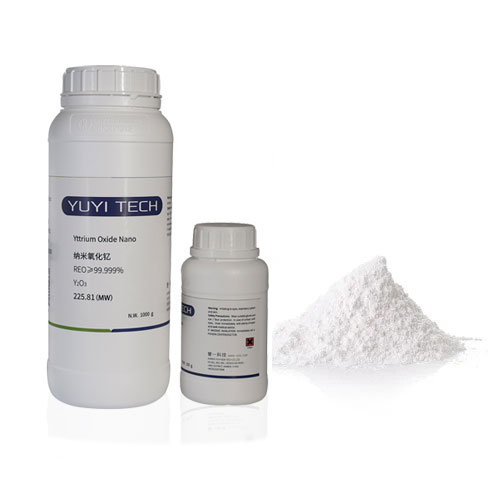 YuYi
YuYi
 Oct 17,2023
Oct 17,2023

Yttrium oxide nanoparticles (referred to as Y2O3 NPs) are an important nanomaterial with wide applications in electronic component manufacturing. It has good optical, electrical, and thermal properties, so it has received widespread attention in semiconductors, displays, sensors, and other fields. The following are the main applications of nano-yttrium oxide in electronic components:

Nanoscale yttrium oxide is used as an insulating layer or dielectric material for electronic components due to its high dielectric constant. In integrated circuits, it can be used as a gate dielectric in metal-oxide-semiconductor field-effect transistors (MOSFETs), providing insulating properties while maintaining high capacitance.
Nano-yttrium oxide has good chemical and thermal stability, which makes it an ideal choice for electronic components in high-temperature and corrosion-resistant environments. It can be used as an outer cladding for the sensor, providing additional protection while maintaining sensor sensitivity.
In the field of optics, nanometer yttrium oxide is used to make transparent conductive films. These films can be used in devices such as liquid crystal displays (LCDs) and organic light-emitting diodes (OLEDs). Its high refractive index and transparency make it important in optical components.

Yttrium oxide nanoparticles are also used as electrolyte materials, particularly in solid oxide fuel cells (SOFCs). In this application, they are used to build solid-state electrolyte membranes that provide ion-conducting channels, thereby enhancing fuel cell performance and stability.
Yttrium oxide nanoparticles are also being studied for use in energy storage devices such as supercapacitors and lithium-ion batteries. They can be used as electrode materials or electrolyte additives to improve the performance of energy storage devices and increase energy density and cycle life.
In general, the wide application of nanometer yttrium oxide in the manufacturing of electronic components benefits from its excellent physical and chemical properties. With the continuous development of nanotechnology, the performance of yttrium oxide nanomaterials will be further optimized, bringing more innovations and breakthroughs to the electronic field.
